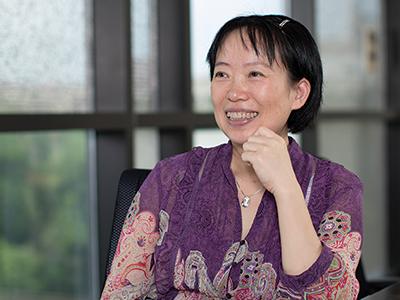The patient was scheduled to have a shoulder replacement. She wasn’t concerned about the procedure itself but did want to know more details. She wanted to know what it would feel like, how much it weighed, even what color it might be.

“I know I didn’t need this to go forward with the operation, but since it will be in my body, I wanted more details,” the patient told Bo Xie, PhD, and associate professor at UT Austin School of Nursing.
And Xie thinks she and patients like her have every right to this information. The trouble is, if health care providers won’t offer it, where do they turn?
The problem isn’t new and it’s growing. A 2006 study by the U.S. Department of Education found that 36 percent of adults have only basic or below-basic skills for dealing with health material. This means that 90 million Americans can understand hospital discharge instructions written only at a fifth-grade level or lower.
Low health literacy is expensive to individuals, to health care providers and to society. It costs the U.S. economy, in the form of additional health care required and days of sick pay, between $106 and $238 billion annually, representing 7 to 17 percent of all personal health care expenditure.
With a doctoral degree in science and technology studies, Xie focuses her research on older adults’ use of information and communication technologies for health information and decision making because these skills may have important implications for patient-provider relationships and health outcomes. Furthermore, she believes that people ought to learn how to more easily access the information they need.
“We know that technology in the form of the computer, Internet and mobile devices can provide useful information,” Xie said. “The trouble is that older adults aren’t always comfortable with these devices or apps or know how to operate them. That’s why the design aspect is so important: It must be simple and user friendly for people with limited technological literacy.”
To narrow this gap between literacy and technology, Xie is using the Electronic Health Information for Lifelong Learners (eHiLL), a National Institute on Aging funded intervention that promotes peer learning as older adults work side by side to complete online exercises.
“We encourage collaborative learning because it engages senior citizens in the activities and helps them be more successful in adapting to the technology,” Xie said. Patients aren’t the only ones needing to access health information. When Ebola and then the Zika virus first broke out in the U.S., public health workers and frontline health care providers needed to know what to expect and how best to protect their patients and themselves.
“Many health care workers spoke of the vacuum of information, about not being able to obtain enough helpful information quickly,” Xie said. “They also wanted to be sure the information was correct.”
Xie recently wrapped up a study on which she collaborated with School of Nursing faculty members Alexandra Garcia, PhD, RN, FAAN; Karen Johnson, PhD, RN; Miyong Kim, PhD, RN, FAAN; and Linda Yoder, PhD, MBA, RN, FAAN, on a project funded by the National Science Foundation to determine how best to get useful information to care providers in the event of another health crisis.
Xie stresses that technology is only one solution, but a powerful one, for questions that patients, caregivers and providers might have. And because her focus is not limited to any one health condition or population, Xie’s research stands to benefit a wide range of issues.
“Technology has the potential to make an impact on disparate populations and health issues,” Xie said. “It is becoming a very powerful and promising way to provide the information that patients, health care workers and the community not only need, but want to have.”

